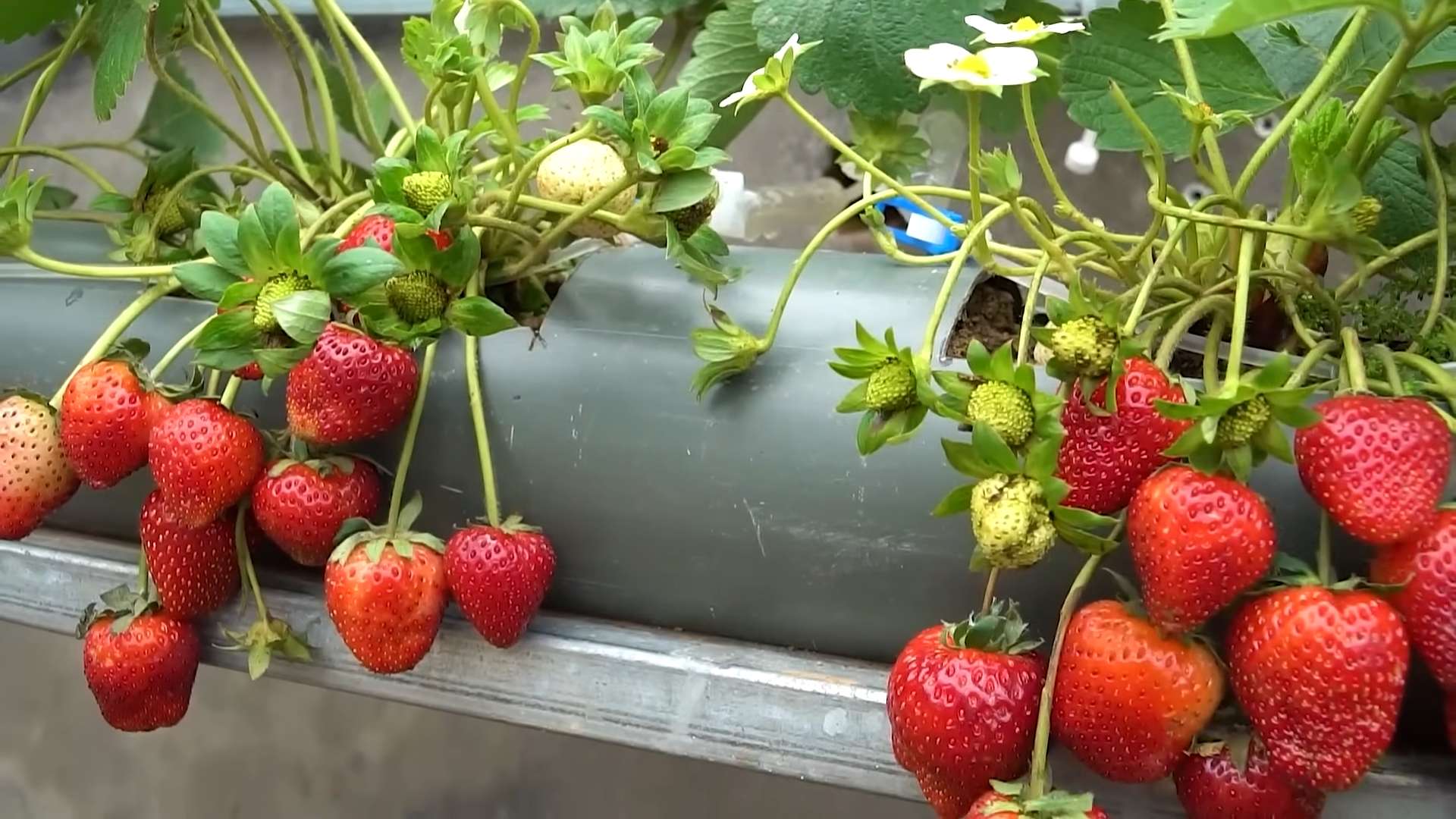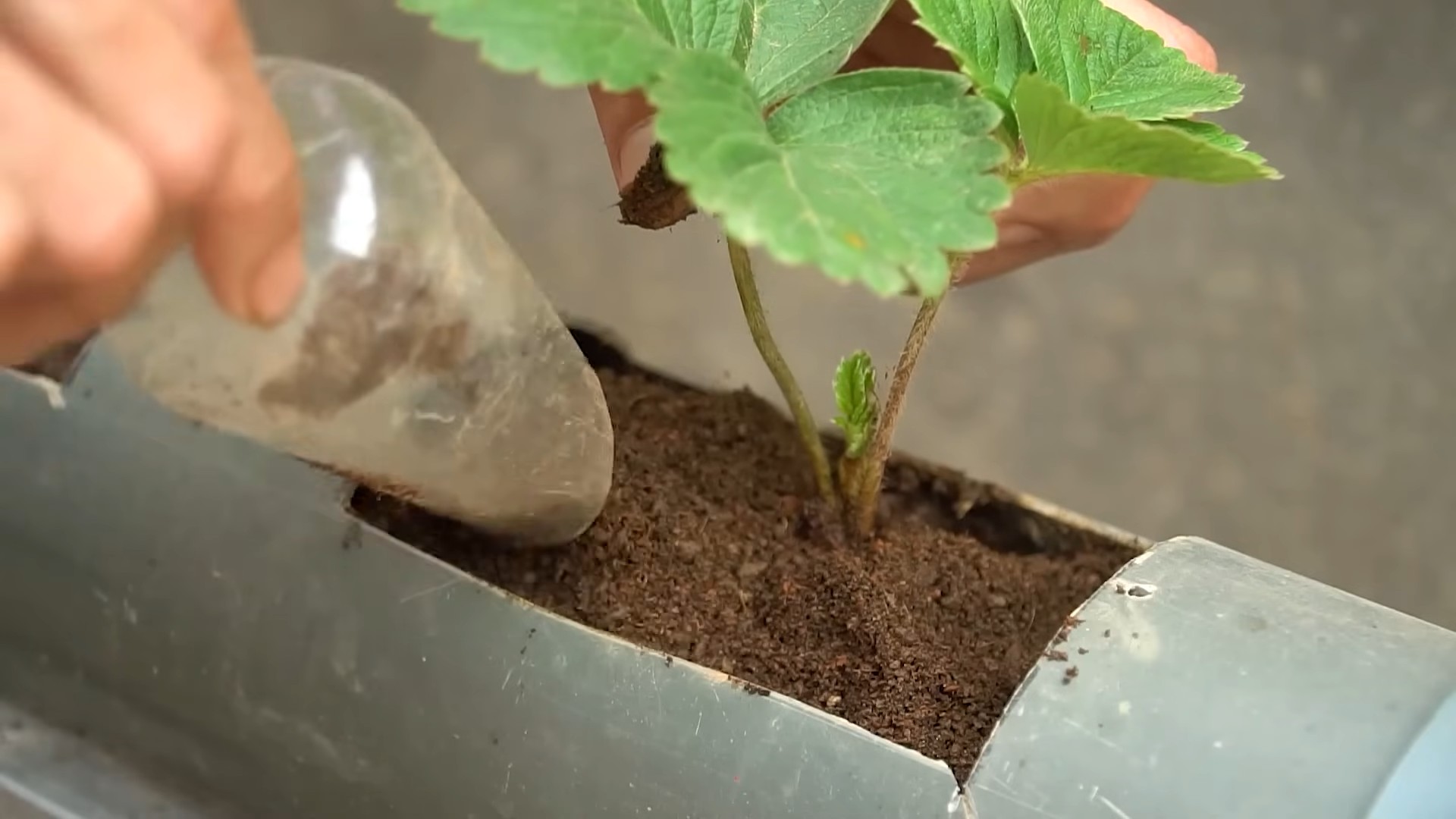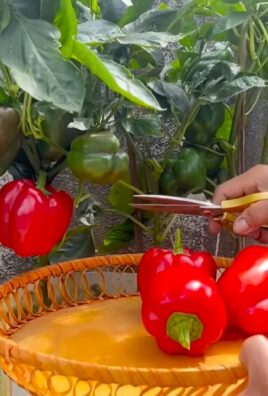Grow Strawberries Easily: Your Guide to a Bountiful Harvest
Grow Strawberries Easily – it sounds idyllic, doesn’t it? Imagine biting into a sun-ripened, juicy strawberry, bursting with flavor, knowing you grew it yourself, right in your backyard. That dream is closer than you think! This article is your passport to a rewarding home gardening experience, packed with simple, effective DIY tricks and hacks to help you cultivate a thriving strawberry patch, even if you’ve never gardened before.
For centuries, strawberries have held a special place in cultures worldwide, symbolizing love, prosperity, and even a touch of mischief. From the humble beginnings of wild strawberries to the countless delicious varieties we enjoy today, the journey of this beloved fruit is fascinating. But let’s be honest, buying strawberries from the supermarket can be disappointing – often lacking the intense flavor and vibrant color of freshly picked berries.
That’s where the magic of home gardening comes in. Grow Strawberries Easily isn’t just about harvesting delicious fruit; it’s about connecting with nature, enjoying the satisfaction of nurturing something from seed to succulent berry, and creating a beautiful, productive space in your own home. This article will equip you with the knowledge and practical tips you need to overcome common challenges, from choosing the right variety and preparing your soil to dealing with pests and ensuring a bountiful harvest. Whether you have a sprawling garden or just a small balcony, you can learn to grow strawberries easily and enjoy the sweet rewards of your labor.
Ready to get your hands dirty? Let’s begin!

Grow Strawberries Easily: A DIY Guide
I’ve always loved the taste of fresh, homegrown strawberries, but I used to think growing them was a complicated process. Turns out, it’s much easier than I thought! This guide will walk you through everything you need to know, from choosing the right plants to harvesting your delicious bounty.
Choosing Your Strawberry Plants
- Decide on the type: There are June-bearing, everbearing, and day-neutral varieties. June-bearing strawberries produce a large crop once a year, everbearing produce smaller crops throughout the growing season, and day-neutral strawberries produce continuously as long as the conditions are right. Consider your climate and how much time you want to dedicate to harvesting.
- Buy healthy plants: Look for plants with vibrant green leaves, strong roots, and no signs of disease or pests. Avoid plants with wilted leaves or damaged roots. Reputable nurseries are your best bet.
- Consider the quantity: Start small if you’re a beginner. A few plants will give you a good idea of the process and a taste of your own strawberries before you commit to a larger-scale operation.
Preparing Your Growing Space
- Choose a sunny spot: Strawberries need at least 6-8 hours of sunlight per day. Find a location in your yard that receives ample sunlight.
- Prepare the soil: Strawberries thrive in well-drained soil that’s rich in organic matter. Amend your soil with compost or other organic materials to improve its drainage and fertility. A soil test can help you determine what nutrients your soil needs.
- Consider raised beds or containers: Raised beds or containers offer excellent drainage and can help prevent soilborne diseases. If you have poor soil drainage, this is a great option. Containers are also ideal for smaller spaces.
- Adjust soil pH: Strawberries prefer a slightly acidic soil pH between 6.0 and 6.8. You can adjust your soil pH using lime (to raise the pH) or sulfur (to lower the pH). Again, a soil test will help you determine the necessary adjustments.
Planting Your Strawberry Plants
- Plant at the right time: The best time to plant strawberries is in spring or fall. Spring planting allows the plants to establish themselves before the hot summer months, while fall planting gives them time to root before winter.
- Dig planting holes: Dig holes that are deep enough to accommodate the roots of your strawberry plants without crowding them. The crown (the point where the leaves meet the roots) should be at or slightly above the soil surface.
- Space your plants appropriately: Spacing depends on the variety, but generally, you should allow 12-18 inches between plants and 2-3 feet between rows. Check the specific recommendations for your chosen variety.
- Water thoroughly after planting: Give your newly planted strawberries a good watering to help them settle into their new home.
- Mulch around the plants: Applying a layer of mulch, such as straw or shredded leaves, helps retain moisture, suppress weeds, and regulate soil temperature.
Caring for Your Strawberry Plants
- Water regularly: Strawberries need consistent moisture, especially during dry periods. Water deeply and less frequently rather than shallowly and often. Aim for about 1 inch of water per week.
- Fertilize as needed: Feed your strawberry plants with a balanced fertilizer in spring and again after the first harvest. Follow the instructions on the fertilizer packaging for the correct application rate.
- Weed regularly: Keep weeds under control to prevent them from competing with your strawberry plants for nutrients and water. Mulching helps significantly with weed control.
- Protect from pests and diseases: Monitor your plants for signs of pests or diseases. Take appropriate action if necessary, such as using insecticidal soap or neem oil for pests or removing affected plants to prevent the spread of disease. Good air circulation can also help prevent diseases.
- Remove runners (optional): Runners are stems that grow out from the main plant and produce new plants. If you want to propagate more strawberry plants, you can let the runners grow and root. Otherwise, remove them to focus the plant’s energy on fruit production.
Harvesting Your Strawberries
- Harvest when ripe: Strawberries are ready for harvest when they are fully colored and slightly soft to the touch. Don’t wait too long, as overripe strawberries will be mushy and less flavorful.
- Harvest gently: Gently pull or twist the ripe strawberries from the plant, being careful not to damage the plant or the remaining berries.
- Enjoy your harvest: Eat your freshly picked strawberries immediately or store them in the refrigerator for a few days.
Troubleshooting Common Problems
Pest Problems:
Common strawberry pests include aphids, spider mites, and slugs. Use insecticidal soap or neem oil to control these pests. For slugs, you can use beer traps or diatomaceous earth.
Disease Problems:
Common strawberry diseases include gray mold (botrytis), leaf spot, and verticillium wilt. Good air circulation, proper watering, and removing infected plants can help prevent these diseases. In severe cases, you may need to use a fungicide.
Poor Fruit Production:
If your strawberry plants aren’t producing many berries, it could be due to insufficient sunlight, poor soil drainage, nutrient deficiencies, or improper watering. Review the previous steps to ensure you’re providing optimal growing conditions.
Remember:
Patience is key! It takes time for strawberry plants to establish themselves and produce a good crop. Don’t get discouraged if you don’t see a lot of berries in the first year. With proper care, your strawberry plants will reward you with delicious fruit for years to come.

Conclusion
So there you have it! A simple, yet incredibly effective method for growing luscious, juicy strawberries right in your own backyard or even on your balcony. This DIY strawberry growing technique is a must-try for several reasons. First, it’s incredibly affordable. You likely already have many of the materials needed, minimizing upfront costs. Second, it’s remarkably easy to implement, regardless of your gardening experience. Even complete beginners can achieve impressive results with this straightforward approach. Third, and perhaps most importantly, the results are undeniably delicious! Nothing beats the taste of homegrown strawberries, bursting with fresh, sun-ripened flavor. This method allows you to enjoy that superior taste without the hassle and expense of commercial farming. This DIY strawberry growing method truly empowers you to cultivate your own little strawberry patch, no matter your space constraints or gardening expertise.
Beyond the basic method outlined, there are numerous exciting variations you can explore to personalize your strawberry growing experience. Experiment with different strawberry varieties to discover your favorites. Some varieties are better suited to hanging baskets, while others thrive in raised beds. Consider adding a layer of organic mulch around your plants to help retain moisture and suppress weeds. You can also explore companion planting, incorporating herbs like basil or thyme near your strawberries to deter pests and enhance their growth. For those with limited space, vertical gardening techniques, such as using stacked planters or hanging baskets, can maximize your yield. Don’t be afraid to get creative and adapt the method to suit your specific environment and preferences. The beauty of this DIY approach is its flexibility and adaptability.
We strongly encourage you to try this easy and rewarding DIY strawberry growing method. It’s a fantastic way to connect with nature, enjoy fresh, healthy produce, and impress your friends and family with your green thumb. Share your experiences with us! We’d love to see photos of your thriving strawberry plants and hear about your successes (and even your learning curves – we all have them!). Use the hashtag #DIYStrawberryGrowth on social media to connect with other strawberry enthusiasts and share your tips and tricks. Let’s build a community of home gardeners, celebrating the joy of growing our own food. Remember, the journey of growing your own strawberries is as rewarding as the delicious fruits of your labor. So grab your supplies, get your hands dirty, and embark on this delightful gardening adventure! You won’t regret it.
Frequently Asked Questions
What type of strawberries are best for this method?
Many strawberry varieties will thrive using this method. June-bearing strawberries are a popular choice for their abundance of fruit in a single season. However, everbearing and day-neutral varieties also work well, offering a longer harvest period. Consider your climate and the length of your growing season when selecting your strawberry plants. Research varieties that are well-suited to your region for optimal results.
How much sunlight do strawberries need?
Strawberries need at least 6-8 hours of direct sunlight per day to produce a bountiful harvest. Choose a location in your garden or on your balcony that receives ample sunlight. If you have limited sunlight, consider supplementing with grow lights, especially during the early stages of growth or in areas with shorter days.
What kind of soil is best for growing strawberries?
Strawberries prefer well-drained, slightly acidic soil with a pH level between 6.0 and 6.8. Amend heavy clay soils with organic matter like compost or peat moss to improve drainage. Sandy soils may benefit from the addition of organic matter to retain moisture. A soil test can help determine the precise pH and nutrient levels of your soil, allowing you to make necessary adjustments.
What are the common problems encountered when growing strawberries?
Common problems include pests like slugs, snails, and aphids, as well as diseases such as gray mold and leaf spot. Regularly inspect your plants for signs of pests or diseases. Consider using organic pest control methods, such as introducing beneficial insects or using insecticidal soap. Proper spacing and good air circulation can help prevent fungal diseases.
Can I grow strawberries in containers?
Absolutely! Container gardening is an excellent option, especially for those with limited space. Use large containers with drainage holes to prevent root rot. Choose a well-draining potting mix specifically formulated for container gardening. Ensure your containers receive adequate sunlight and water regularly.
When can I expect to harvest my strawberries?
The harvest time depends on the variety of strawberry you choose and your climate. June-bearing strawberries typically produce a large crop in the early summer. Everbearing varieties produce smaller crops throughout the growing season, while day-neutral strawberries produce fruit continuously from spring to fall. Check the plant tags or seed packets for specific harvest information.
What should I do with my strawberry harvest?
Enjoy your fresh, homegrown strawberries immediately! They are delicious eaten fresh, added to yogurt or cereal, or used in jams, pies, and other desserts. You can also freeze them for later use or make strawberry preserves to enjoy throughout the year. The possibilities are endless!
What if my strawberries aren’t producing many fruits?
Several factors can affect strawberry production. Insufficient sunlight, poor soil drainage, nutrient deficiencies, pests, or diseases can all reduce yields. Review the growing conditions and address any potential issues. Ensure your plants receive adequate sunlight, water, and nutrients. Regularly inspect for pests and diseases and take appropriate action.





Leave a Comment